 Procession in Itri, Lazio leading their way toward the bonfire Procession in Itri, Lazio leading their way toward the bonfire In Puglia, Basilicata, Lazio, Umbria, Lombardy and other regions of Italy, many towns and villages celebrate la Festa di San Giuseppe (March 19th) in a unique way... by lighting Fuochi nella Notte, fires of the night--or bonfires. The bonfires and festivities are on various days (depending on the town), from March 17th through the 19th. Known by different names, the bonfire festival might also contain the words Torciata (torch), Fiaccolata (torchlight procession), Falò (fire). For example, in Tuscany's Pitigliano, the event is called Torchiata di San Giuseppe with people dressed in medieval costumes and a procession of men and boys dressed in hooded monk's robes carrying flaming reed torches that will help build the bonfire. After the bonfire has burned down to ashes, tradition calls for people to collect and keep the ashes, ensuring their good luck in the coming spring. As with other holidays beginning in the New Year and throughout lent, the lighting of bonfires has a long history going back to the time of pagan worship. Through the last 2000 years, the activity has morphed into a Christian tradition. This tradition also coincides with the need to burn the trimmings from vines, olive trees and other woody crops. While Christians claim the fires are a representation of the good father, Saint Joseph, striving to keep the infant Jesus warm during winter nights, others say the tradition is from the ancient Romans celebrating the dark winter being overtaken by the light of spring. Many modern observers say it's just another way for fun-loving Italians to throw yet another party, for as with most festa and sagre, there is always the food, and a great sense of community.
And if the truth is to be told, Italians love bonfires so much, you will also come across other Fuochi on other saint day festivals across Italy. --GVI Maria Giuseppa Robucci, better known as Nonna Peppa in Italy, is currently the oldest living person in Europe. Nonna Peppa has yet another birthday coming up... on March 20th she will turn 116! This centenarian lives today in Apricena, Puglia with her daughter Filomena and her family. She was born in 1903 in nearby Poggio Imperiale where she married farmer Nicola Nargiso and bore five children, nine grandchildren and 16 great-grandchildren. She managed a local bar along with her husband for many years, is very religious and claims to have known Saint Padre Pio personally. For the last few years she holds the title of honorary mayor of Poggio Imperiale, making her the oldest mayor in Italy. Her secret to longevity? Nonna Peppa doesn't drink or smoke. --GVI Today, March 8th, is International Women's Day and in Italy it's the time when mimosas are blossoming with their golden color. All across Italy women are presented lovingly with a bouquet of mimosa flowers to say "Thank you"... thank you for being Mama, that you for being my sister, thank you for being a great daughter, thank you for being a fantastic co-worker, or thank you for being a wonderful wife. March 8th is called La Festa delle Donne in Italy. While in Italy the day has become almost like Mother's Day here in the States, the observance started in 1909 by the Socialist Party of America, and was held in New York City after a sweat shop factory burned to the ground, killing 145 workers--mostly young women who were underpaid and had to work in unsafe conditions. This event and the observance was the de facto birth of the modern Women's Movement. Sadly, in Italy and around the world, women are still struggling to achieve equal pay for equal work, among many other issues. The tradition of a gift of mimosas dates back to 1946 when the feminists, Rita Montagnana and Teresa Mattei, came up with the idea of women offering the bouquets as a symbol of mutual respect, sisterhood and support. Mimosa was one of the few flowers in bloom on the date. The Mimosa also represents strength and endurance, being a tough plant that can survive adverse conditions in Italy. Oddly, being originally a Socialist observance, it seems that in Italy, the Festa delle Donne has been commercialized... another day where bouquets of Mimosa tied with yellow ribbons are sold in supermarkets, bars and tobacconists all over Italy. It's become expected that fathers, sons and husbands also give the flowers to the women in their lives. The commercialization of La Festa delle Donne has made it more like Mothers Day and might be losing some of its original meaning based on solidarity of women's issues. Even chocolate companies offer their dolci in yellow packaging. In some parts of Italy the Festa is celebrated on the closest Sunday to March 8th, and special events are held, such as a procession of mimosa decorated gondolas in Venice and a regatta for female rowers. . --GVI The commercialization of the Women's Movement in Italy From Grand Voyage Italy to all Women... Auguri!
Support each other and keep up the fight for equality! Continued from Part 1... With the advent of this international distribution of peeled tomatoes (pelati), the ancient fruit finally came back to the Americas... not via its neighbor, Mexico, but the long way around, through Italy and Europe. But there are over 7,500 tomato varieties grown for various purposes. Heirloom tomatoes are becoming more and more popular as home gardeners and organic farmers that they have more variety and develop incredible flavor. There is more disease resistance with hybrid tomatoes, however. The categories of tomatoes is as follows: 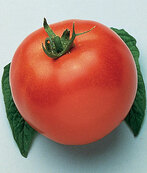 Globe tomatoes are the shape of commercially produced tomatoes, but is also a shape category for heirloom tomato types. They are used for slicing for sandwiches, eating fresh or for wedges added to salads. 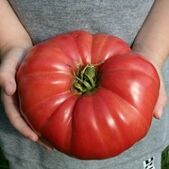 Beefsteak tomatoes are very large tomatoes where one slice would fit a large sandwich. They usually have very muscular shoulders and have arguably the sweetest taste. Thick slices work well for sandwiches or caprese. Some varieties can produce fruit weighing up to several pounds. 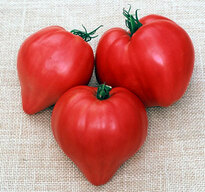 Oxheart tomatoes can range in from small to as big as beefsteaks, and are shaped like large heart or strawberry. Perfect salad tomato. 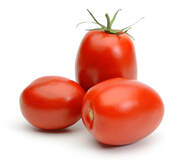 Plum-Shaped tomatoes, are plum shaped and are often called Paste tomatoes, but not all plum shapes have the meaty interior of a paste tomato. Some varieties can grow quite long like a horned pepper. Fleshy ones, like the D.O.P protected San Marzano, are used in sauces, while other types are useful in salads. 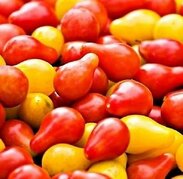 Pear-Shaped tomatoes can be either a paste type or a smaller one with less flesh. They come in a wide variety of colors--red, orange, purple, yellow--and can make a great statement in salads and pasta recipes. 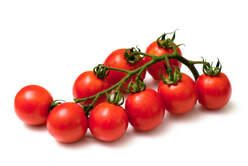 Cherry tomatoes are small and typically about 1" around. The flavor is usually very sweet and are usually eaten whole or halved in salads. 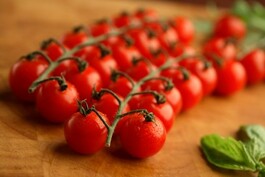 Grape tomatoes, are much smaller than Cherry tomatoes, as small as a blueberry or currants, for use in salads. 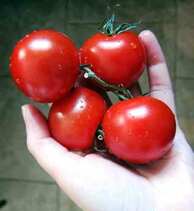 Campari tomatoes are sweet and typically come with the vine still attached in a cluster. They can range from red to purple to orange. They are juicy, have low acidity, are bigger than cherry tomatoes, but are smaller than plum tomatoes. 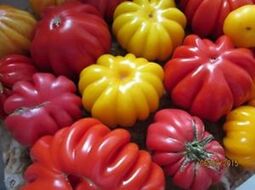 Ribbed tomatoes are typically large and can come in a variety of colors and varieties. In Italy, this is one of the most common types of tomatoes available. They can be meaty like a beefsteak, but always juicy. Vesuvio Piennolo has an elongated, oval shape with a pointed tip (spongillo). The skin is thick and the flesh is firm with a sweet, tangy flavor. It is commonly thought of as a long storage tomato and is seen throughout the Campania region hanging in home gardeners' sheds or garages as bunches, lasting from September throughout most of the winter months. They are also a common tomato being sold in hanging bunches in outdoor markets. The Piennolo is one of the most prized tomatoes in southern Italy. Most types of tomato come in a variety of colors: deep red, pink-red, purple-pink, deep-purple, green, striped, yellow, pale yellow, ivory colored, orange and "black" (a very dark purple). The color of tomatoes can generally be seen as an indicator of flavor: Reds are sweet and higher acidity Pink can be sweeter than red and milder Yellow/Orange being sweet or fruity with medium to low acidity Pale Colors being milder with less acid Darker Black/Purple have high acidity and might be more intense and almost smokey in flavor Striped varieties can be tangy, fruity with high acid and sugar levels (great for salsa). 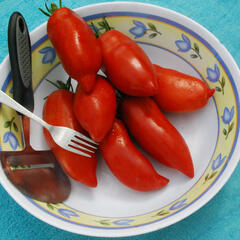 San Marzano Tomatoes San Marzano Tomatoes The Myths about San Marzano Tomatoes The best known tomato for canning became a plum shaped variety grown in the San Marzano region, near Naples. It's no small coincidence that this is in Southern Italy, where 80% of Italian immigrants came from. San Marzano became the go-to tomato for canning over 120 years ago, and is still the primary tomato used in canned tomatoes--and even for the production of sun dried tomatoes. San Marzano are almost exclusively canned. Fresh ones can be found in Italy, but almost never in the United States. The San Marzano tomato has DOP protected status by the European Union. DOP stands for Denominazione di Origine Protetta (literally “Protected Designation of Origin”). Look for their seal on a can to make sure they are the real deal. It it says something like "San Marzano Type", it isn't the real thing, which can only be grown in a specific area surrounding Mount Vesuvius. Facts: If you are buying tomato seeds, you will only be able to grow a San Marzano "type" because you cannot match the climate and volcanic rich soils where they are grown in Italy. Although these are thought to be the "best" Italian tomato, they are primarily grown for industrial farming, canning and sun-drying in Italy--mainly because their high acidity helps preserve them in the canning process. Yes, you might find actual San Marzano tomatoes in local markets in the area near Mount Vesuvius where they are grown, but again, they are not the best tomato--even within Italy--in my opinion. You can think of them as the best Italian imported canned tomato for sauces, not the most sweet or best for eating fresh. And don't forget to add some sugar to cut their acidity when using them for sauce. The first Italian cannery was built in 1875 by Francesco Cirio, an early supporter of the San Marzano tomato. His company picked, peeled, packed and shipped canned tomatoes all throughout Italy--and later to America. The reason for it's success is not because it's the best tasting tomato... it's simply because it was developed and hybridized from three other varieties which made it withstand mechanical harvesting techniques put in place in the late 1800s to satisfy the needs of the growing canning industry. Its secret? High acidity! Sort of takes the romance out of thinking the San Marzano is "the best" Italian tomato, doesn't it? No great loss. Truth be told, the San Marzano is so acidic that all great Italian chefs know it needs a handful of sugar to offset the overly high acidic content necessary for long storage and canning. Lucas and I had an "artisinal pizza" once in a town near us where the pizza chef swore he used nothing but "the best San Marzano" imported tomatoes as his sauce. I could tell. By the end of the meal our lips were burning. For some really sweet tomatoes, think Heirloom... Growing Your Own Heirloom Tomatoes It's fairly easy to grow heirloom tomatoes from seed, but a simpler way to get started growing the amazing variety of tastes is to buy heirloom plants in the spring at your local nurseries. Stay away from anything labeled "hybrid". You cannot save seeds from a hybrid tomato--it won't look anything like the mother fruit you took the seed from. Many garden centers nowadays offer Heirloom varieties that you can plant and get a head start on, with the benefit of saving seeds from your biggest and best tasting fruits so you can continue to grow them again year after year. Growing heirloom tomatoes can become part of your family heritage. If you purchase young heirloom plants, buy and plant them just after the danger of frost in your location. Here's a LINK to help you find out the best time for planting based on your zip code in the U.S.. Now, how to plant... First, make sure you are planting in ground that is tilled nice and fluffy. Make sure you have amended it with some nice organics. I like a mix of peat moss (to hold moisture) and compost from my own compost pile. You can buy bagged compost, but stay away from fresh manures... they will burn the plants. You can use any number of organic or non-organic plant foods that have chemicals balanced for growing vegetables that grow fruits. As for planting, here's a great tip. Tomatoes will grow roots all along their stems if you let them. With young seedlings, pull off the lower leaves and plant deeply. If I have 12" tall plants, I'll plant them with about 2/3 under ground. This gives them a better start--allowing more roots to grow which will supply more nutrients to your plants--and fruits. I grow my tomatoes upwards onto "quad-pods"--sort of like a four legged tripod. You can make them out of wood or bamboo. As the plants grow, trip off side suckers that grow in the crotch of some leaf joints and tie off the plants to your supports. I plant one tomato plant per corner of my quad-pods, each about 3 feet apart. Don't overcrowd or your plants will sap nutrients from each other and all will be stunted. Indeterminate types keep producing fruit until the autumn frost, while determinate varieties are smaller and produce a set amount, then die. Indeterminates can grow to 8 feet tall, so use tall, strong supports. I don't like wire cages because it's difficult to harvest tomatoes toward the center. With heirlooms, you can try yellow, purple, black, pink, red or even striped varieties. My best all around tasting tomato is called Eva Purple ball--a 3" pink, perfect, pest free tomato. My best beefsteak for taste is Giant Belgium. And I love growing Olivette Juane (a prolific yellow pear shape) and Jersey Devil (a horned, chili pepper shaped sauce tomato). Harvest in the mornings for best flavor. As your fruits come close to ripeness, hold back a bit on watering so you don't dilute the flavors. And watch out for your tomatoes' enemies: the tomato hornworm and chipmunks! 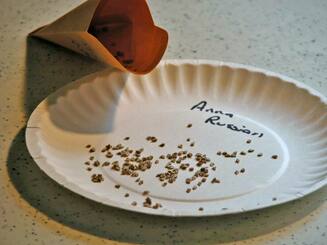 Seed-Saving With heirlooms, label them carefully if you plan to save seeds. Save seeds from your biggest, most blemish free fruits... their genetics will ensure you get a good strain of seeds for next year. First, place the seeds in a plastic cup with water and label the cup as to variety, weight of fruit and any other notes about how they performed in your garden (robust plants, bountiful harvest, pest resistant, blight resistant, etc). Place a wet paper towel cover over the top of the cup and set aside for 1 week. The seeds will ferment and all the slime will be removed from the seeds. After a week or so, rise the seeds carefully, replacing with clean water as you go, until there are only clean seeds in the cup. Remove the seeds from the water and place into labeled coffee filters and set somewhere to dry. Package in paper coin envelopes with their names, date saved and notes. 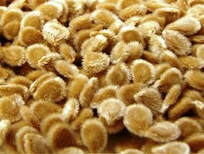 Healthy, fuzzy tomato seeds Healthy, fuzzy tomato seeds You can start your seeds next season about 6-8 weeks before your last frost, indoors, under artificial lights in seed starting trays and pots. I tend to use two sizes during seed starting... a small seed "pack" size pot made out of peat or compressed paper products... and then I transplant deeper into 4" plastic pots. At first, plant seeds very shallow into peat pots (set into large plastic seed starting trays) filled with seed starting mix (sterile) dampened with warm water. Lightly cover with a little soil, patted down firmly. Label each variety to keep track of different types.  Cover with a clear plastic cover for the first week or so until you see tiny sprouts, then remove the cover. After another week or so you should see two "true leaves" appear, that look just like adult tomato leaves. This is when you can start using tomato food to help them grow. Keep a timer on your grow lights to mimic sunup and nighttime light patterns. Water each tray regularly to keep the soil moist. Keep the lights close to (but not touching) the leaves all through the growth process. I keep my grow light on chains and can move the light upwards as the plants get taller. When they are about 4" tall, I keep a small fan blowing across the cellar toward them. This builds sturdy stems by constantly moving them. You can plant your tomatoes in the garden when they are 8-12 inches tall. I set them outside in a protected area to "harden off" to temperature and wind before planting them in my garden beds. Keep them out of too much direct sunlight when hardening them off. Plant each plant into a deep hold, about 2/3 as deep as the plant's height. Mulch well, water on a regular basis (but not too much or some tomatoes will crack or lose flavor). Harvest when they are slightly soft when squeezed, but still firm--preferably in the morning, when their flavor is the sweetest. Heirloom Seed Resources Annies Heirloom Seeds Heirloomseeds.com Seedsavers Exchange Growing Heirloom Tomatoes in Pots Old House Journal Article: How to Grow Heirloom Tomatoes I hope this gives you a better insight into the long, special voyage the tomato has made... from the Andes mountains, across the sea to Spain, Italy and the rest of Europe, then back to the United States with the influx of Italian Immigrants. The tomato is alive and well all over the world, but especially in Italy. They've adopted this little nightshade fruit and made it their own... And in my own family, growing tomatoes has been and always will be part of our Italian heritage. My father taught me how to grow tomatoes and I always looked forward to biting into the sweetness he grew, right off the vine in our humble backyard garden. I have been growing tomatoes in my own gardens ever since I moved out of my Manhattan loft home and studio, and if truth be told, I even grew tomatoes there--on my sun-filled fire escape. I've taught my son to grow tomatoes since he was about 4 years old. He helps start the seeds in our cellar under our grow lights, he plants them in our raised beds, he harvests them, and even knows how to remove the skins by boiling and plunging into ice water and making a great, fresh tomato sauce. Tomatoes are a link to our Italian ancestors and our culture. I highly recommend growing your own heirloom tomatoes. They are called heirlooms for a reason... their seeds will be passed down from generation to generation and become part of your own family's heritage. --Jerry Finzi You may also be interested in... My New Favorite Tomato: Striped Roma San Marzano Tomatoes: Accept no Imitations! Video: Hanging Bunches of Piennolo Tomatoes Video: Canning Tomatoes, Italian Style Worlds' Largest Tomato Making a Great Pizza Sauce My Beautiful Tomato Harvest Ladybug Caprese Insalada Tomato Tree Producing up to 3000 Pounds of Fruit! Are Italian Gardeners Fading Away? Music Video: Home Grow Tomatoes Song! Copyright, Jerry Finzi, Grand Voyage Italy, All rights reserved
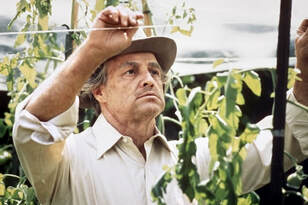 If you look in my cellar during mid-May of any year, you will find a couple of dozen young tomato plants under my grow light, nearly ready to be planted out in my raised vegetable beds (after fear of frost is gone). My mind always fills with thoughts of tomatoes in this time of year, with hope that there will be a good yield for our little famiglia. If I say, "tomato sauce" you think of Italian food, right? If I say "home grown tomatoes" you might think of Vito Corleone playing with his grandson in his garden in that final scene in his life. If I say "pizza" you picture a round crust with cheese and tomato sauce. That red color emblazoned in the minds and hearts of Italians everywhere (even though heirloom tomatoes come in many colors). Some say that Il Tricolore (the tricolor flag of Italy) represents the hills of Italy with green, the snow capped mountains with white, and the blood spilled from the wars of independence by red. But others in la Cucina Italiana would argue that the green is for pesto, the white for besciamella and the red for salsa pomodoro found in tri-color lasagna... or that the flag represents the simple but wonderful insalata caprese: green for basil, white for mozzarella, and the red for ripe tomatoes. In any case, you might say the red in Il Tricolore represents the true blood of Italy--the tomato. 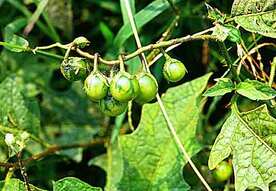 The Wild Tomato of Peru The Wild Tomato of Peru But how did the tomato become such a strong part of Italian culture? It is not indigenous to Italy, or Europe for that matter. The tomato was first "discovered" by the Spanish Conquistadors while exploring and then conquering the Americas. The Spaniard, Hernán Cortés, conqueror of Mexico in 1519, returned home and brought with him a cargo of Aztec tomatoes. The tomato most likely originated in the Andes mountains of Peru and spread sometime in the distant past to most parts of South and Central America and eventually on up to Mexico. In fact, it was the Incas who first cultivated tomatoes about 1000 years ago, eventually trading seeds to Aztecs and Mayans to the North. Most botanists consider the tiny, scraggly bush Solanum Pimpinellifolium (or "Pimp") as the ancestor of all modern tomatoes, itself becoming an endangered species. The odd thing is that the tomato became popular in Europe long before it came to be used in North America. Colonial Americans thought of the tomato as a poisonous plant, after all, it's a close cousin or Nightshade, a well know toxic vine, and in fact, the leaves and vines of the tomato plant are fairly toxic. 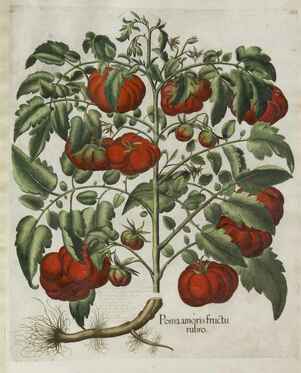 16th century botanical illustration 16th century botanical illustration It was during the 1500s that Columbus and other explorers introduced the tomato to Europe, but 200 years of skepticism had to pass before the tomato gained acceptance there. It was feared that one touch of a tomato on the lips would kill you. One likely catalyst for its popularity in Europe, especially with the wealthy and elite, was the rumor that it was an aphrodisiac. The general population more than likely heard about this new fruit and saw that the Barons and Dukes behind the castle walls were flourishing, not falling down dead. One can imagine that the trash middens where refuse from the castles, chateaus and villas were thrown, became a great source of distribution for the tomato plant. As anyone who grows tomatoes knows, tomatoes are prolific and seeds can spring up anywhere. Leave a fruit on the ground and chances are good you'll have more tomatoes next year. Leave a tomato on the kitchen counter and the seeds might eventually sprout right out of its own skin. 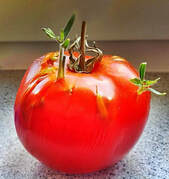 Self-Sprouting Tomato Self-Sprouting Tomato Little by little, the peasants discovered gnarly vines growing wild with attractive red or yellow fruits that were attracting wild life. (Chipmunks love them in my garden!) "Why not give them a try? The birds, squirrels and rabbits aren't dying, after all." Presto... a free, easily grown source of vitamins and amazing flavor. It was easy to save seeds and cultivate a very large harvest from even a modest number of plants. The word tomato is derived from the Aztec word xitomatl, shortened in Europe to tomatl. The French originally called the tomato, pomme d’amour (love apple) before calling simply la tomate. Perhaps they changed the name when the aphrodisiac claims failed to yield any effect. In Italy it was pomi d’oro (golden apple) which today becomes il pomodoro. Tomatoes do come in a wide variety of colors, including golden yellow, but along with tomatoes, the tomatillo also came from the Americas--many of which are also yellow. In Italy, the tomato more than likely prospered because of its near-tropical climate. The tomato can be grown all year long in tropical temperatures. It makes sense the Spanish had tomatoes first, after all, they sponsored the Columbus and Cortes explorations. In this way, Spaniards actually led the way, "teaching" Italians to fry tomatoes up with eggplant, squash and onions, and used the dish as a condiment on bread and with meats. The cuisine of Southern Italian peasants, who often lacked meats and other proteins on a regular basis, developed into a mostly vegetarian diet in which tomatoes and olive oil, spices and vegetables were and eaten with bread, rice or polenta. The first time the pomi d'oro is mentioned by name in Italy was in 1548 in the household records of Cosimo de’Medici, the grand duke of Tuscany. His house steward presented a basket to “their excellencies”. The Duke had no idea what was inside, only that it came from his Florentine estate at Torre del Gallo. The records describe the scene, “And the basket was opened and they looked at one another with much thoughtfulness.” After the event, the house steward wrote to the Medici private secretary to tell him that the basket "arrived safely". But as far back as 1692, tomatoes were used as ingredients in a cookbook from Naples, Lo scalco alla moderna. The author obviously copied details from Spanish tomato sauce recipes ("alla spagnuola"), including simple ingredients like minced tomatoes and chili peppers. Curiously, he did not recommend using the sauce specifically with pasta: "Take a half a dozen tomatoes that are ripe, put them to roast in the embers, when they are scorched, remove the skin diligently, then mince them finely with a knife. Add onions, minced finely, to discretion. Hot chili peppers, also minced finely. Add thyme, in a small amount. After mixing everything together, adjust it with a little salt, oil, and vinegar. It is a very tasty sauce, both for boiled dishes or anything else." Italian nobility at first used this new, jewel-like fruit merely as a tabletop decoration, gradually incorporating it into their cuisine by the late 17th and early 18th century. They cherished their beauty, and experimented with selective breeding, managing to create tomatoes of many colors and shapes 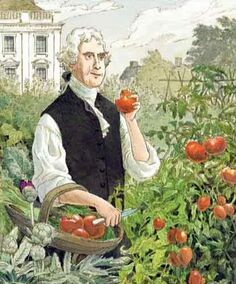 It took another 200 years for the tomato to become the national treasure is it today, but by the late 1700s, the peasants of Naples began to put tomatoes on top of their flat breads, creating something very close to the modern pizza--essentially turning pizzas from white to red. Tomatoes gained popularity, especially with the elite of Europe and Americans taking the Grand Tour, and soon pizza attracted tourists to Naples, tempting them into the poor areas of the city to sample the new treat. Pizza was born. Soon after taking a Grand Tour himself, Thomas Jefferson, being an expert farmer and a culinary expert, brought tomato seeds back from Europe. Jefferson grew tomatoes in his expansive Monticello garden, with his daughters and granddaughters using them in numerous recipes including gumbo, soups, pickling and especially for ketchup (the common use for tomatoes in the 19th century). In an 1824 speech to the Albemarle Agricultural Society, Jefferson’s son-in-law, Thomas Mann Randolph, claimed that ten years before, the tomato was barely known, but by 1824 "everyone was growing and eating them". Slow but sure, people were taking notice of this special fruit.  Pizza Margherita, the birth of modern pizza Pizza Margherita, the birth of modern pizza In the same time period we find the first recorded evidence of tomatoes used in sauces and preserved condiments and pastes. In the 1800s, in Naples a recipe was written about pasta al pomodoro, the very first mention of tomatoes being married to pasta. In 1889, after Italy became one nation, the King and Queen of Italy found it necessary to visit the former kingdom of Naples to appease the citizenry who disliked their loss of independence. Queen Margherita was bored with the same old French cuisine that they were eating everywhere they went--as was the custom in all of Europe. She called for the most famous pizza-maker in Naples, Raffaele Esposito, and commanded that he make pizza for her. He brought three types: pizza marinara with garlic, pizza Napoli with anchovies and a third with tomato sauce, mozzarella and basil leaves. She fell in love with the third one and Esposito named it after her--Pizza Margherita. A short time later, the Queen sent her emissary with a thank you note, which still today hangs on the wall of Pizzeria Brandi, still run by his descendants. Pizza--with tomato sauce--was to become more popular than ever after the Queen's royal recommendation--the equivalent to Royal Yelp nowadays. Emigration to the United States did more to increase the popularity of the tomato than anything else in history. Because of the climate in Italy, tomatoes became a big crop, even small farmers produced an excess of the sweet fruits. A need developed to preserve them, and to create new markets. The only foods that may be safely canned in an ordinary boiling water bath are highly acidic ones--coincidentally, tomatoes are naturally high in acid. Sun drying tomatoes and storing them in olive oil was also a proven way to preserve large stores of tomatoes, as long as no fresh herbs or garlic were added, the method a safe with a long shelf life. During the mid-1800s the science of canning started to develop and improve, allowing this new cash crop to find its way to distant markets. By the end of the 19th century Italians were already using tomatoes in their recipes and as a condiment. When Italians emigrated to America, they wanted to have products that reminded them of home... canned tomatoes filled that need, along with olive oil and other specialty imports. Italians at home and expats in American developed import-export businesses to give relatives and other their compagni jobs based on their new found wealth in America. In Italy, exporting companies were popping up, especially in the Naples area. By the time World War I rolled around, even the Italian Army experimented with canned ravioli, spaghetti alla bolognese and Pasta e fagioli, the inclusion of acidic tomatoes in the recipes aided in the cans' shelf life. Italian grocery stores stocked these products in Little Italy neighborhoods in New York, Philadelphia, Chicago, Boston and New Orleans. Click HERE to read Part 2When I was a young, biblical epic films were all the rage, and this big, hunk of a man called Victor Mature was in a bunch of them. His sharply sculpted face and curly hair was reminiscent of ancient Roman statues displayed in the Vatican Museum. He was Hollywood's idea of "a man's man". Baring his broad chest and wide shoulders in many films, it's no wonder why women of the day saw him as a "hunk". He was born to Swiss-German mother Clara Ackley and Marcellus George Mature who had the time honored profession of arrotino--a knife sharpener and cutler. Marcellus was actually born Marcello Gelindo Maturi in the tiny Alpine hamlet of Pinzolo, Trento (one of the few autonomous Provinces), where many Maturi still live today. The young Mature started out helping his father as a salesman for butcher supplies but eventually went to Pasadena to study acting. He had modest success in a few films, but when World War II broke out, he served as a petty officer in the Coast Guard on troop transports. He was lucky to survive the war, having been in harms way in places like the North Atlantic, Mediterranean, Caribbean, Normandy and islands of the South Pacific. He was on Okinawa when the A-bomb was dropped on Japan. After the war he really made his mark, coming in big demand for some excellent roles, such as in John Ford's My Darling Clementine (1946) and in Henry Hathaway's Kiss of Death (1947). He then moved on to perhaps his most recognizable roles in Biblical epics: Samson and Delilah (1949) ; The Egyptian (1954); The Robe (1953) and one of my favorites, Demetrius and the Gladiators (1954)... great Roman sets and Gladiators! Throughout the 1960s he seemed semi-retired, playing golf more than acting, but he then landed a role that parodied himself as an egotistical, Hollywood pretty boy persona in Neil Simon's After the Fox (1966). If you haven't seen this film, do so. He's hysterical in the role... and the plot is great too, with Peter Sellers as a gold thief passing himself off as an Italian film director who manages to get the population of an entire coastal town to help him steal the gold.
Victor Mature was one of the most under-rated actors of his time... in a way, similar to the pathos that even Dean Martin brought to the screen after his Martin & Lewis days were over. His films are worth searching out. Mature died of cancer at his Rancho Santa Fe, California, home in 1999. --Jerry Finzi Italy is know for passionate people, and Antonio La Cava from Matera is one of them. He's passionate about sharing the glory of books with children. La Cava carries a telling surname, as Matera is the city of caves, or Sassi, when people have been living in cave homes for tens of thousands of years. Retired as a schoolteacher after 42 years but couldn't stop spreading knowledge to il bambini of his region of Bacilicata. So in 2003 he bought a used tre-ruote (three wheeler) Ape mini truck and created his Bibliomotocarro, a portable library that houses 700 books. La Cava travels over 500 kilometers each week to 8 regular stops on his route. The children know of his arrival by the sound of organ music coming from his unique vehicle. The children run to greet him as if some TV star is showing up. He also funds his efforts, pays for fuel, repairs and buys the books from his own pocket. His passion for the love of the written word will be carried on--certainly by the many children on his route. --Jerry Finzi “A disinterest in reading often starts in schools where the technique is taught, but it’s not being accompanied by love. Reading should be a pleasure, not a duty.” --Antonio La Cava Being a second-generation Italian-American, I wasn't affected by the Italian naming conventions. I once asked my mother why we never spoke Italian and she answered, "When we got married, I wanted an 'All-American" household, so we only spoke English around you kids." I'm certain one reason for this was to lessen the impact of racial bias against her kids at the time. This might also be the reason why I was named "Jerry"--as my mother told me, "I thought of 'Jerry' after watching a Jerry Lewis movie while I was expecting you. It sounded very American." While my birth certificate says "Jerry", I had no idea my legal name was "Jerry" until at age 13, I got a copy of my birth certificate to get my working papers. "Jerry"? Well, that was a lot better than "Gerald", my baptism name, which I could barely pronounce properly when I was little. Even so, everyone in my family knew me as "Gerald" until I ordered them to stop calling me that. Still today, many won't call me "Jerry". (To add to my confusion, Saint Gerald was French!). Being the second born son, I should have been named after my mother's father, Salvatore Vetri. That would have been nice, since my Dad's lifelong nickname was Sal, even though he was born Saverio. Since I was born 11 years after Salvatore's passing, perhaps my mother felt less obliged to name me after him. My sisters and brother who came before me met the same fate with their names. The oldest of us--the twin sisters--Barbara and Joan should have been named Caterina and Mariantonia, Caterina being my paternal grandmother's name, and my maternal grandmother being Caterina. (Barbara was the oldest by three days... YES, they were born three days apart, but that's another story.) Kenneth, my older brother, should have been named Sergio, after my paternal grandfather. My sister Joyce should have been named after one of my aunts, perhaps Antonia or Rosa. Although I know that Barbara, Joan, Kenneth and Joyce are my siblings, I have no idea who they were named after since those names are unknown in our family tree. Only their middle, confirmation names reflect names of uncles or aunts. Perhaps other movies my mother watched while she was pregnant for each of them influenced her... The twins? Barbara Hutton and Joan Crawford were famous during the 1940s when the Twins were born, Joyce Reynolds was a well-known, All-American looking actress when my sister Joyce was born. But Kenneth? There really were no famous actors or performers named Kenneth when my brother was born--and it's a very British name, at that. Mom probably just liked the sound of it. As for me, I really think I would have preferred to be named Francesco, Giovanni, or even Anselmo after one of my my uncles. "Jerry" never really suited me. And here's an interesting note about my father's name, Saverio... There is no Saverio in our family tree, and since my great-grandfather Anselmo was adopted, there was no maternal grandfather to name him after. It seems the name was given to my father (second son of Sergio) as a "votive name". Saverio means "second home" or "new home". My grandfather traveled to America 2 times before bringing over is wife and three children, 7 year-old Anselmo (named after my great-grandfather), 4 year-old Saverio and baby Antonia. Perhaps Saverio was born at the moment my grandfather decided to take the first steps on emigrating. Saverio. New Home. It suited Dad. How to properly name an Italian child... . The basic convention goes like this:
Be aware that there are exceptions to this naming custom that preclude this assuming your ancestors adhered to these conventions. In the case of orphans, they would have no idea of parents' names. For someone estranges from his family, he might not want to use their names. It is also possible that the first born son might have died, so they might have also given the same name to a second born son who survived. Many children did not live to adulthood in the nineteenth century and earlier. It is also very possible that your ancestors didn't keep to these conventions, for instance, many named their first sons after a hero. For example a hero in southern Italy (The Two Kingdoms of Sicily) in the early 1800s was Guglielmo Pepe, so an ancestor in this time period could be named after him. A final example of exceptions to the naming custom can be seen in the nontraditional family of my great-great-grandparents, Pasquale and Rosa. They were great opera fans who named all of their children after characters from their favorite operas. Due to theses types of exceptions, you cannot use the Italian naming tradition to assume an ancestor's name. When doing genealogical research another problem can arise when finding several people living in the same town at the same time, all with the same first and last name. Think about it a second. If someone named Giovanni had five sons, all of them could have named their first born sons Giovanni, resulting in confusion as to which one is your gr-gr-grandfather and which are merely distant uncles. The same would hold true when researching the maternal members... Nonna Rita might have several Ritas that were named after her. They might even have been born in the same year! Remember, families were often quite large, especially in the rural, agricultural south. This shows that although it seems naming conventions might help you discover your ancestors, they might also confuse the issue. When in doubt, it might be a good idea to hire a genealogical research professional to make sure you find the right people in your family tree. --Jerry Finzi For help in researching your ancestors, the Facebook group
Italian Genealogy is highly recommended by GVI. There are several professional researchers who are members who freely offer their advice and who can be hired to help find your ancestors.  More often than not, I'm shocked at the blatant racism I see on Italian Facebook pages and felt compelled to leave a response to someone who claimed that most immigrants today offer nothing to American society and exist well below the poverty line... in other words, "we don't want to support them" or "we don't want them" or "they have no skills anyway".... My response to these people: Many would argue that when our grandparents and great-grandparents came here, they were also living below the poverty line--in fact, poverty was one of the main reasons for them coming to America. They also didn't speak English at all. Most Italians listed their profession as "Laborer" or "Farmer"... in other words, unskilled peasants. Often the father came first, working to earn enough to bring over his wife and children, as my Grandfather Sergio Finzi did. He sailed across the Atlantic, in steerage, in the middle of winter (when fares were cheaper) three times over the course of 5 years... the third time bringing his wife Caterina and three children (including my 4 year old father, Saverio). My father's family came from Molfetta and had a very tough life at first in Hoboken... a large family living in a tenement. (They would have another 5 children born here making them a family of 10). Pretty much the same with my Mother's family. Luckily, my grandfather was skilled as a tailor and found employment in a coat factory. As young children, my father and his brothers were tasked with walking the RR tracks to pick up chunks of coal that fell from the trains for the kitchen stove, which was the only source of heat in winter. They all had to leave elementary school early to help support their family. My father and one of his brothers bought a lame "Three-Legged Horse" and wagon and sold fruit and veggies to the people coming off the ships in the harbor. Another brother started his own grocery store in Hoboken. A couple of my uncles served in WWII and even my 65 year-old grandfather carried a U.S. Draft Card while my father worked in a military plant making springs for jeeps and tanks. My father became a fruit and deli man his entire life, always working for other people. Even as a child, I remember my father working long hours, night shifts and often even on holidays. And there was no overtime pay! My mother and her mother both worked in factories for "piece work"... paid by the piece. My mother bore the sweltering heat and airplane hum of industrial fans all day long as she worked at hot press machines making jewelry boxes... and crushed two fingers, bearing her crooked finger the rest of her life to show for it. She worked her way up to be a supervisor over 30 other workers. Somehow my parents housed, clothed and fed their 5 children and saved enough to buy a small six-family apartment house where I grew up, the rents from the other five tenants helping to support us. After work I remember helping my father as he maintained the building: putting on a new roof, repairing the chimney, fixing the furnace, doing plumbing and electrical, painting--whatever was needed to keep the tenants happy. He taught me that working hard was a good thing. My grandparents and parents definitely contributed to our society and created opportunities for their children... My parents were proud to have 5 children, lived to see 19 grandchildren and many great-grandchildren, all living as Americans today. Several of us owned our own businesses, hired employees, bought nice homes... and lived the American Dream. I remember the pride on my parent's face the first time they came into Manhattan to see my 5000 square foot photo studio. It took our family three generations to succeed in America--three generations to fully assimilate. America gave us that chance. As Americans, we all have to remember that even people who are desperate enough to enter our country through unusual means for asylum (like the Cuban boat people or Central Americans trudging through the desert) in fact should have a chance at a new life. There are no laws against crawling or swimming out of desperation onto our shores. Not everyone wanting a better life comes to our country on a jumbo jet through airport Customs. For those of you who have never read the entire text of the poem that is emblazoned on the Statue of Liberty: New Colossus Not like the brazen giant of Greek fame, With conquering limbs astride from land to land; Here at our sea-washed, sunset gates shall stand A mighty woman with a torch, whose flame Is the imprisoned lightning, and her name Mother of Exiles. From her beacon-hand Glows world-wide welcome; her mild eyes command The air-bridged harbor that twin cities frame. “Keep, ancient lands, your storied pomp!” cries she With silent lips. “Give me your tired, your poor, Your huddled masses yearning to breathe free, The wretched refuse of your teeming shore. Send these, the homeless, tempest-tossed to me, I lift my lamp beside the golden door!” My purpose in penning these words is not to let people forget that we are all immigrants and owe thanks to the struggles of those who went before us--AND who come after us. In my opinion, our country is stronger for their efforts and contributions. I've lived in another country and know for certain that we have something special here.
Never forget that WE were immigrants, too. Jerry Finzi 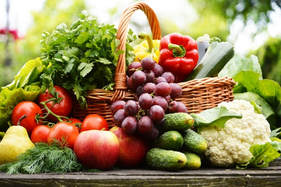 by David Dalessandro from Sharon, Pennsylvania Need some guidance here, so I thought coming to my paisans at Italian Gardeners on Facebook would be a good place to go... While pulling my tomato plants today it hit me that I was alone. My knowledge of gardening, weak as it is, came most from my Father who got his knowledge from his Father who was an immigrant to the U.S. from Foggia. My grandfather worked for Carnegie Steel in Farrell, PA as a janitor for the office. Carnegie had provided a home for him at a cost of $2.200. Company homes without a bathroom were $2,000 so Pasquale went for the better model. Companies did that in those days...this was 1925. The company then deducted so much from his pay and he had a decent house where he could walk to work. Another thing the company did for employees was to provide garden space. Carnegie owned extra land in Wheatland, PA and the company would plow the land--at no cost to workers--and let employees claim part of it to put in their own garden. My grandfather took great advantage of that and every year would plant tomatoes, potatoes, beans and other vegetables that would help to feed his family. It was in this garden that he taught my Father, who then taught me. So, fast forward to today, about 80 years later. I am stuck on the Teaching Thing. My children are grown and not really interested. My daughter is in El Paso, Texas and my son, still living with us, is working to become a tennis professional. Neither are much interested in gardening.  100 year-old Portland gardener, Ulisse Edera. Photo by Keith Skelton. 100 year-old Portland gardener, Ulisse Edera. Photo by Keith Skelton. But I love it. I enjoy starting the seeds, tilling the ground, fertilizing and watching the plants grow. Because of the abundance God has provided, I also can many jars of tomato, sauce and hot peppers. Again, not because I have to, like my Grandfather had to, but because I want to. But, I am afraid that I am the last of the line. My uncles are gone. My Father is gone. My wife humors me and lets me do my thing in the garden. It bothers me that it is likely to end here. And, I fear I am not alone. No one at work talks about a garden. No one else in the neighborhood has one. Just me. It is a shame, I think, that the accumulated knowledge of at least three generations will end. Do any of you have the same concerns? Do you have children or grandchildren who work with you and ask questions and help pull weeds and can tomatoes and wonder why something is growing or not? Let me know...and if you have answers for this situation, I would love to hear them. Thank you so much, my paisans. 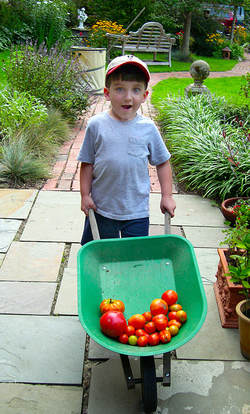 Passing on the tradition Passing on the tradition And my Thoughts... And I totally agree with David, which is why I've asked his permission to post his words here on Grand Voyage Italy. After all, we are #AllAboutItaly here... and we're all about the Truths about our culture. I feel David is correct--too many young people today are detached from their cultural roots and have no idea where their food comes from, especially true with Italian-Americans. When one takes a Voyage around Italy, all you see is gardens--everywhere, in tiny front yards, hanging on walls, on balconies and terraces and in pot gardens surrounding people's front doors. It doesn't matter if they have lemons and pomegranates on their patio or just a pot of basil on their windowsill--it seems that everyone grows something edible. We should all strive to teach our children the value of home grown, healthy food, like I've done for my own son, Lucas. Here's a photo of him with his tomato harvest at 4 years old... He's 15 now and looks forward to each February when we go down into the cellar, sort out our seeds and start our heirloom seeds that we save each year from our garden. He now looks forward to the tomatoes we grow as if they are old friends... Eva Purple Ball, Olivette Juane, Giant Belgium, Jersey Devil and more. He also is learning to cook using the vegetables harvested from our garden, and even when we don't grow them ourselves, he now knows how to smack a cantaloupe, listening for the lowest pitched sound (a sign of ripeness), or check a peach's ripeness with his nose, as my Dad taught me. Gardening is part of the Italian soul. Pass it on, people. Pass it on... --Jerry Finzi And for more on the subject of gardening... Creating a Hanging Italian Wall Garden
Bicycles - Italian Garden Style My New Favorite Tomato: Striped Roma San Marzano Tomatoes: Accept No Imitations! How the Tomato Became Part of Italian Culture Only in Italy: Strange Veggies from La Belle Paese To see how you can create an Italian Garden of your own, check out the Grand Voyage Italy Shop on Amazon. |
Categories
All
Archives
January 2024
|



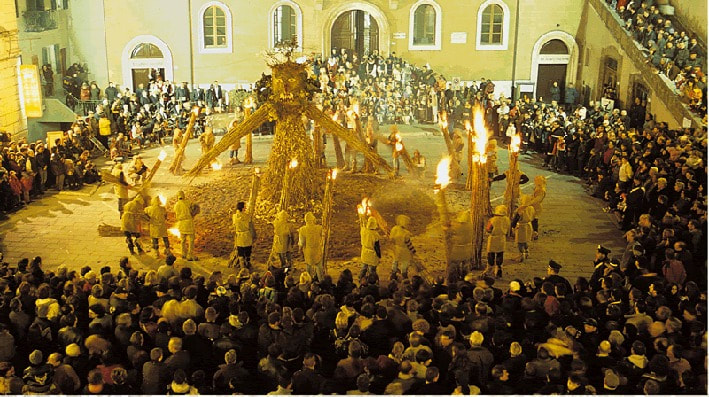

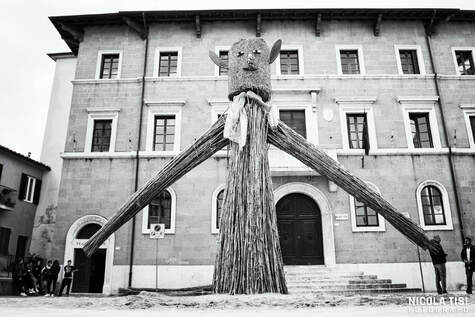


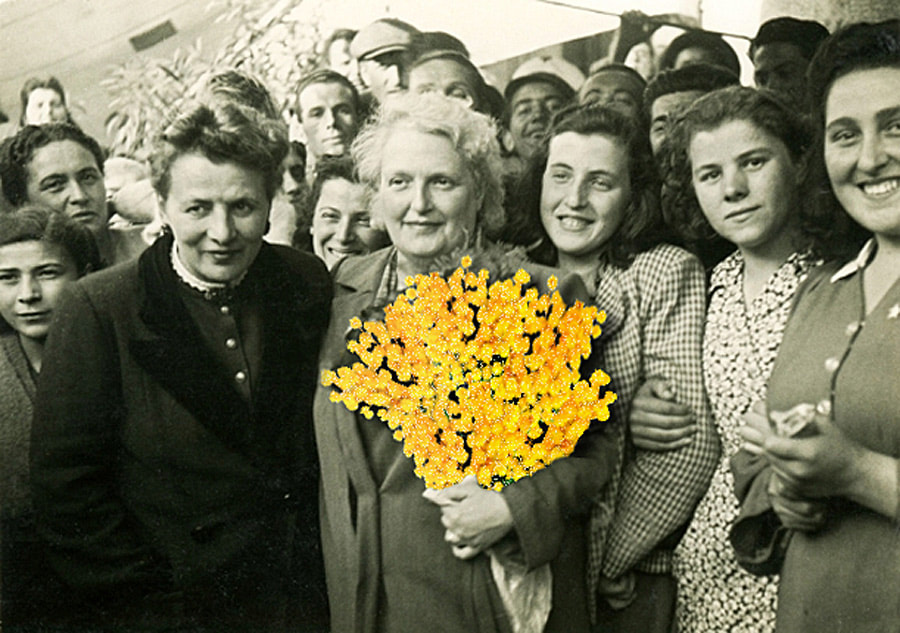
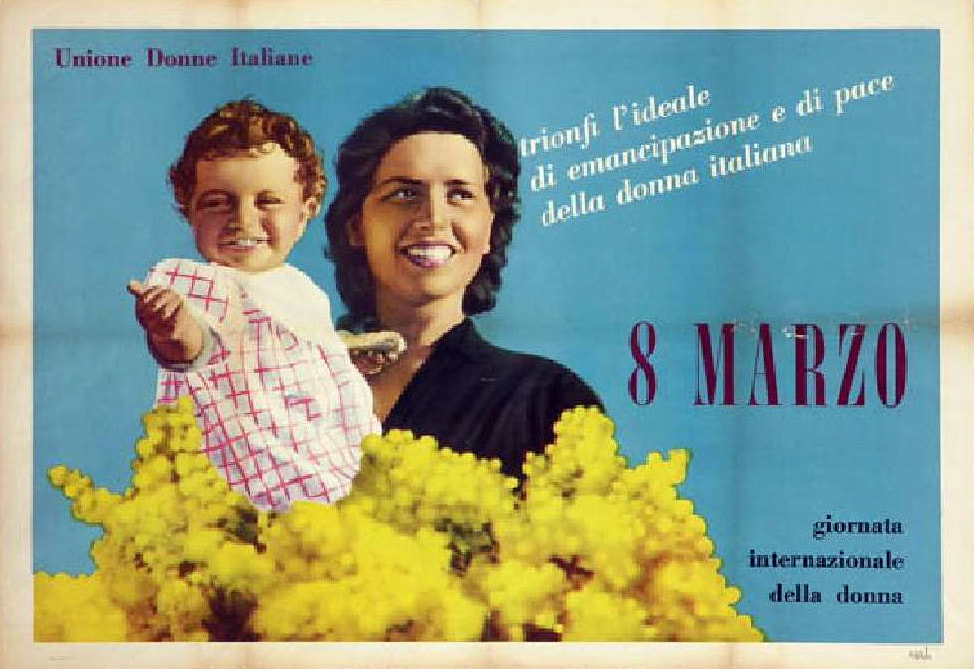
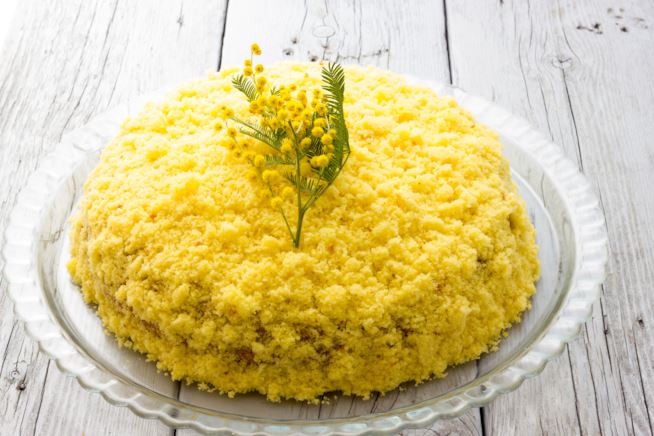
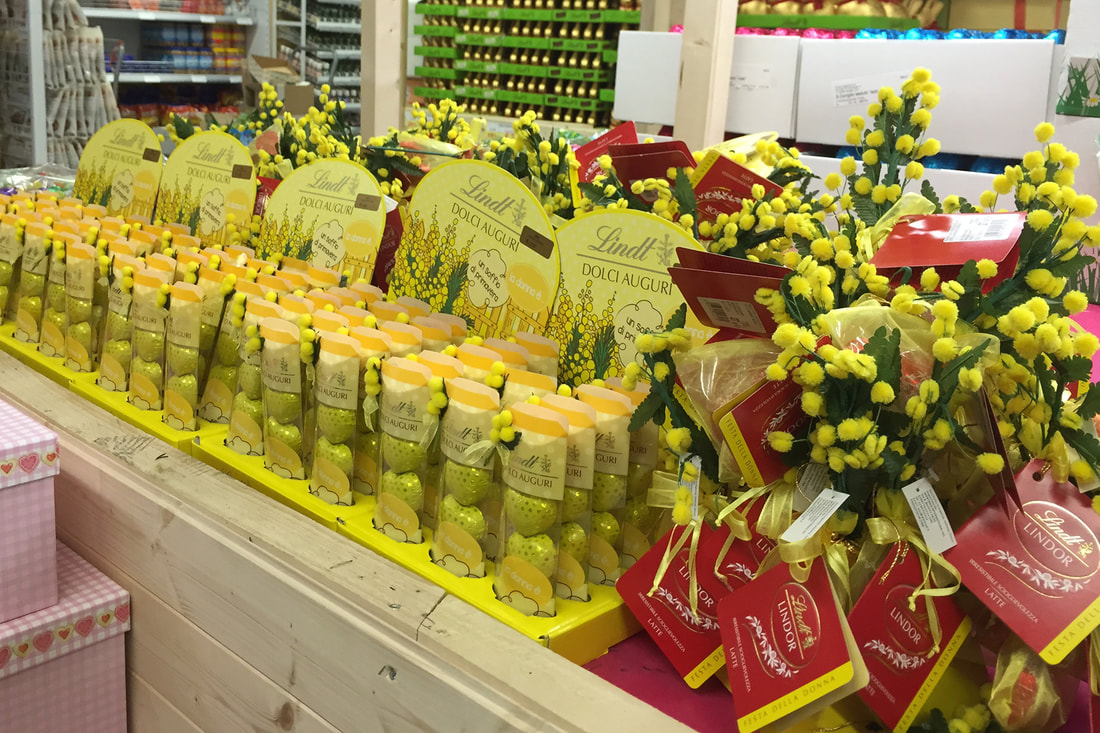
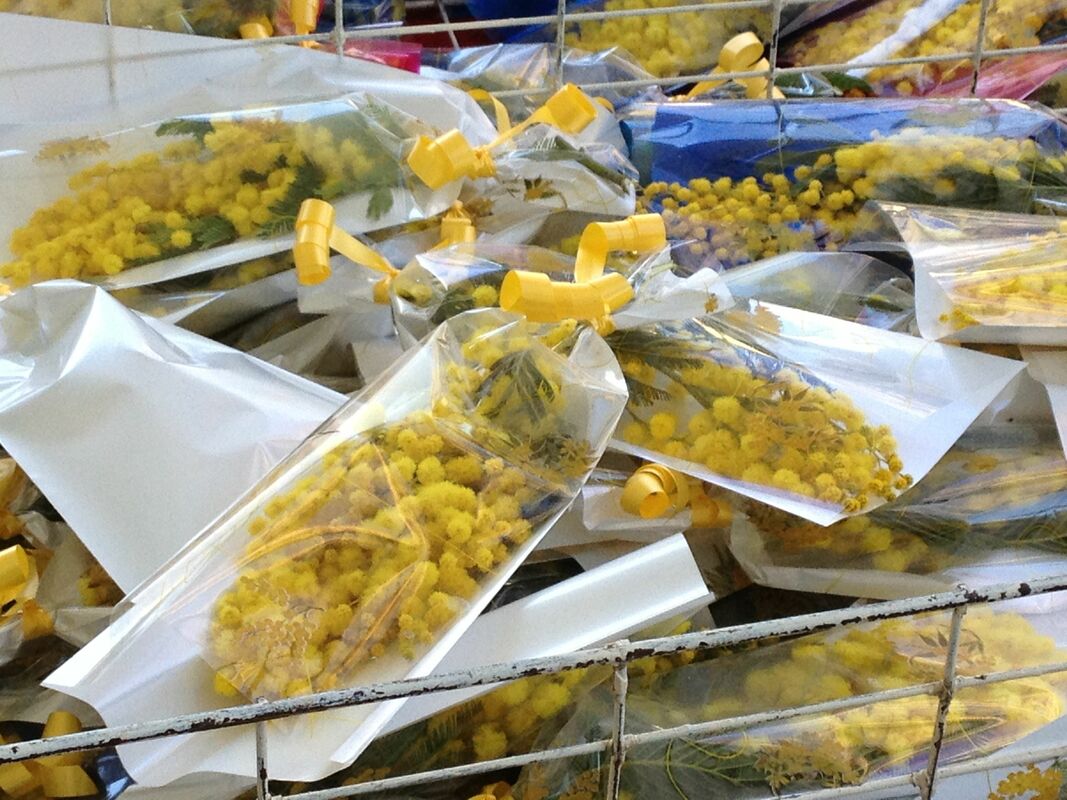

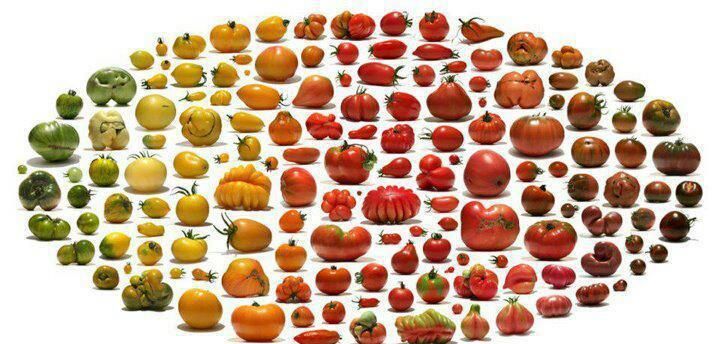
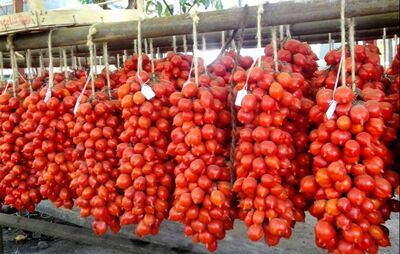
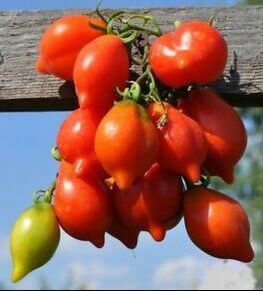

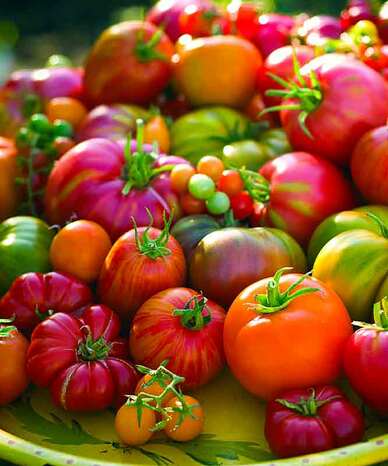
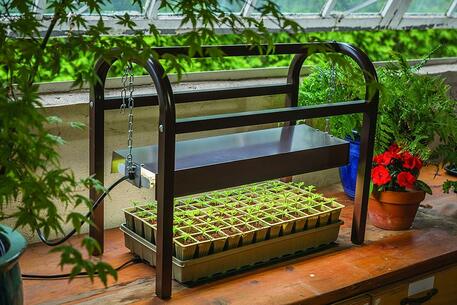


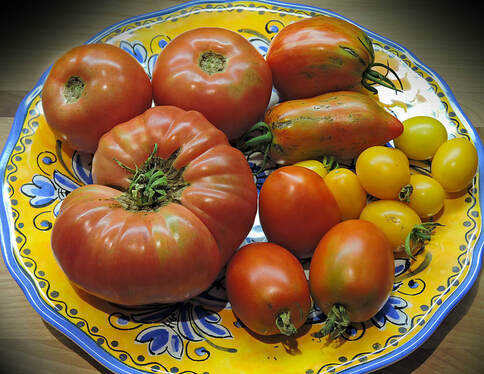
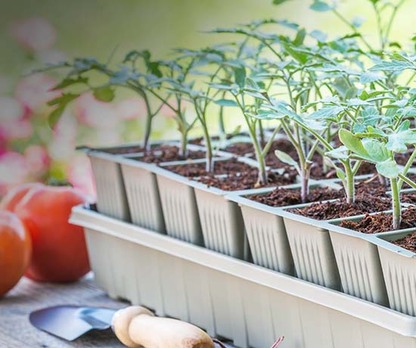
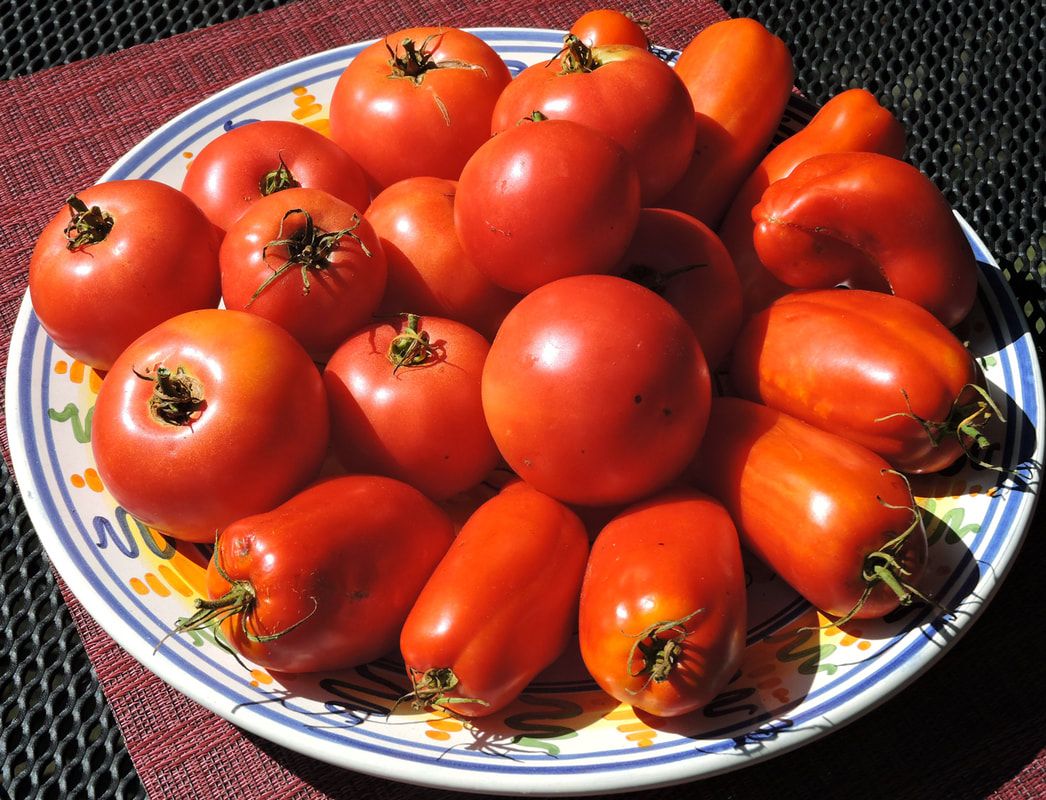
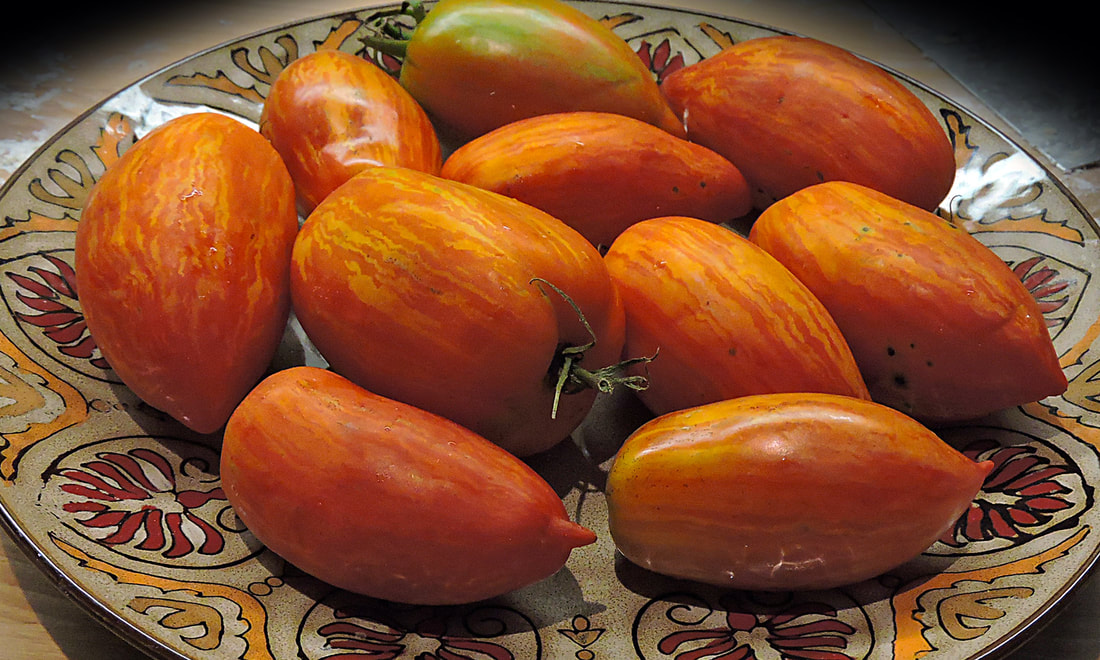
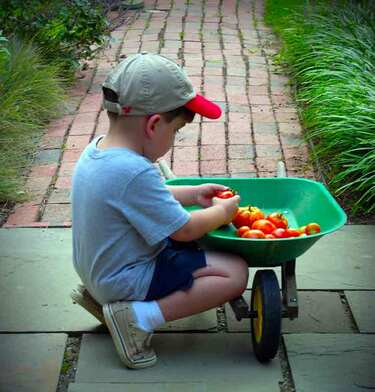
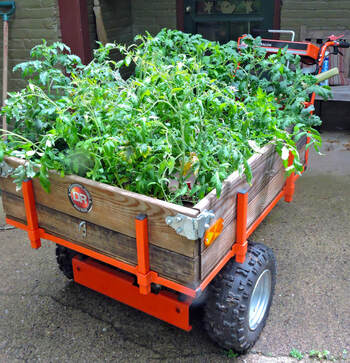
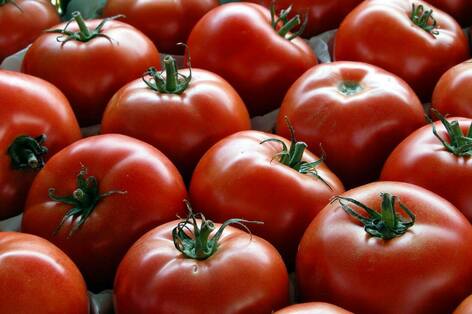
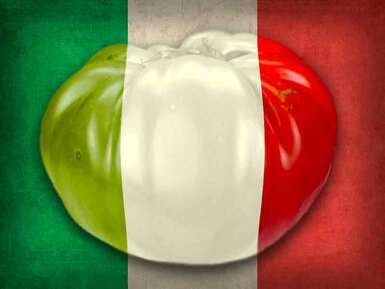
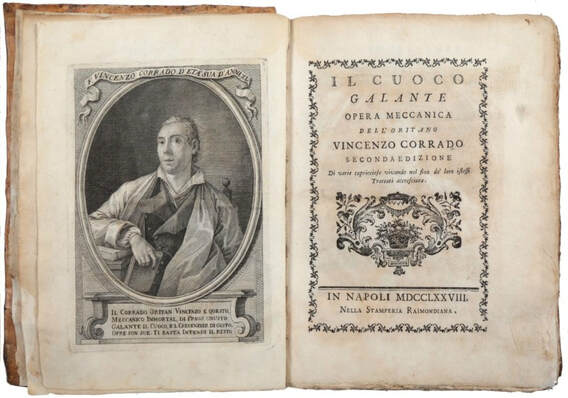


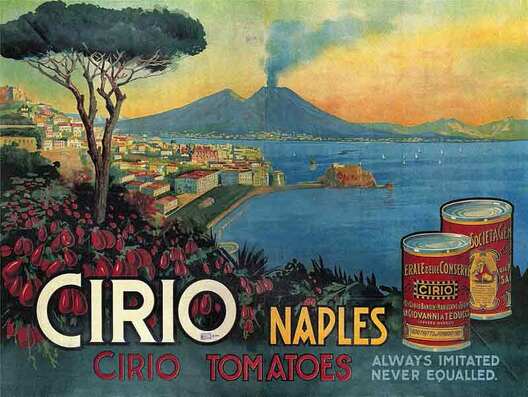
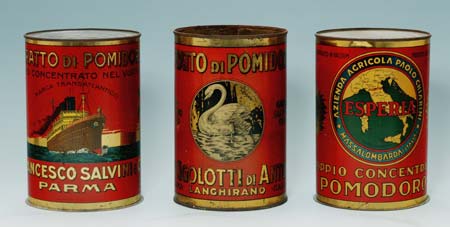






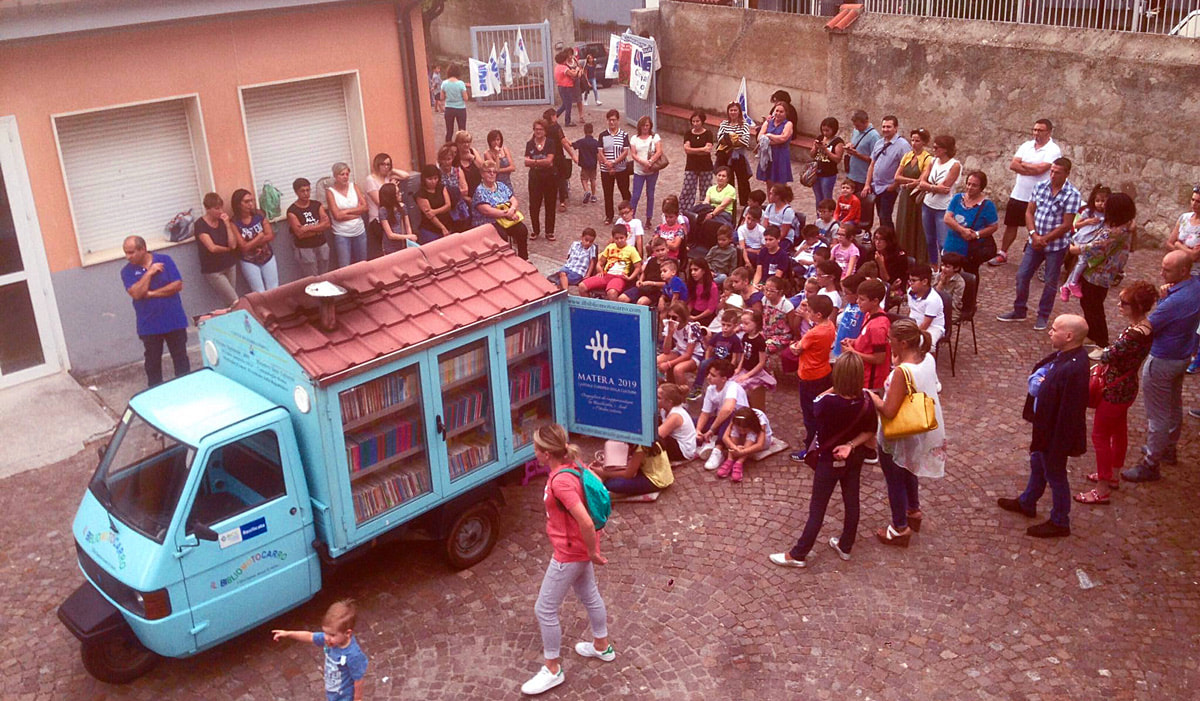

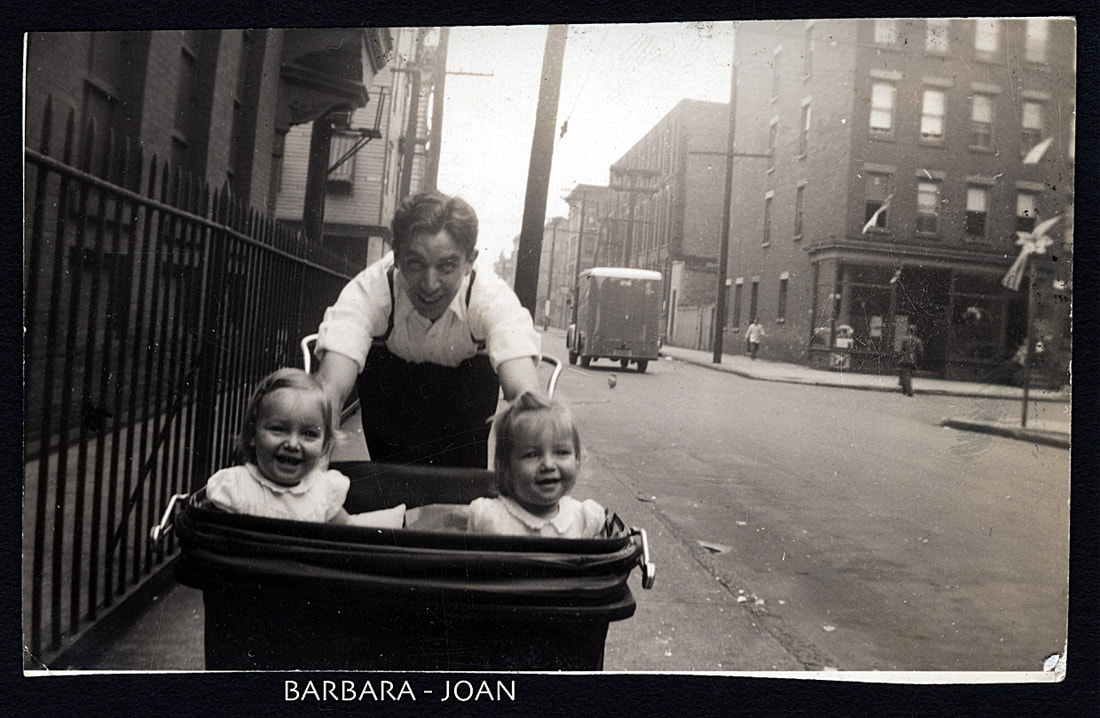





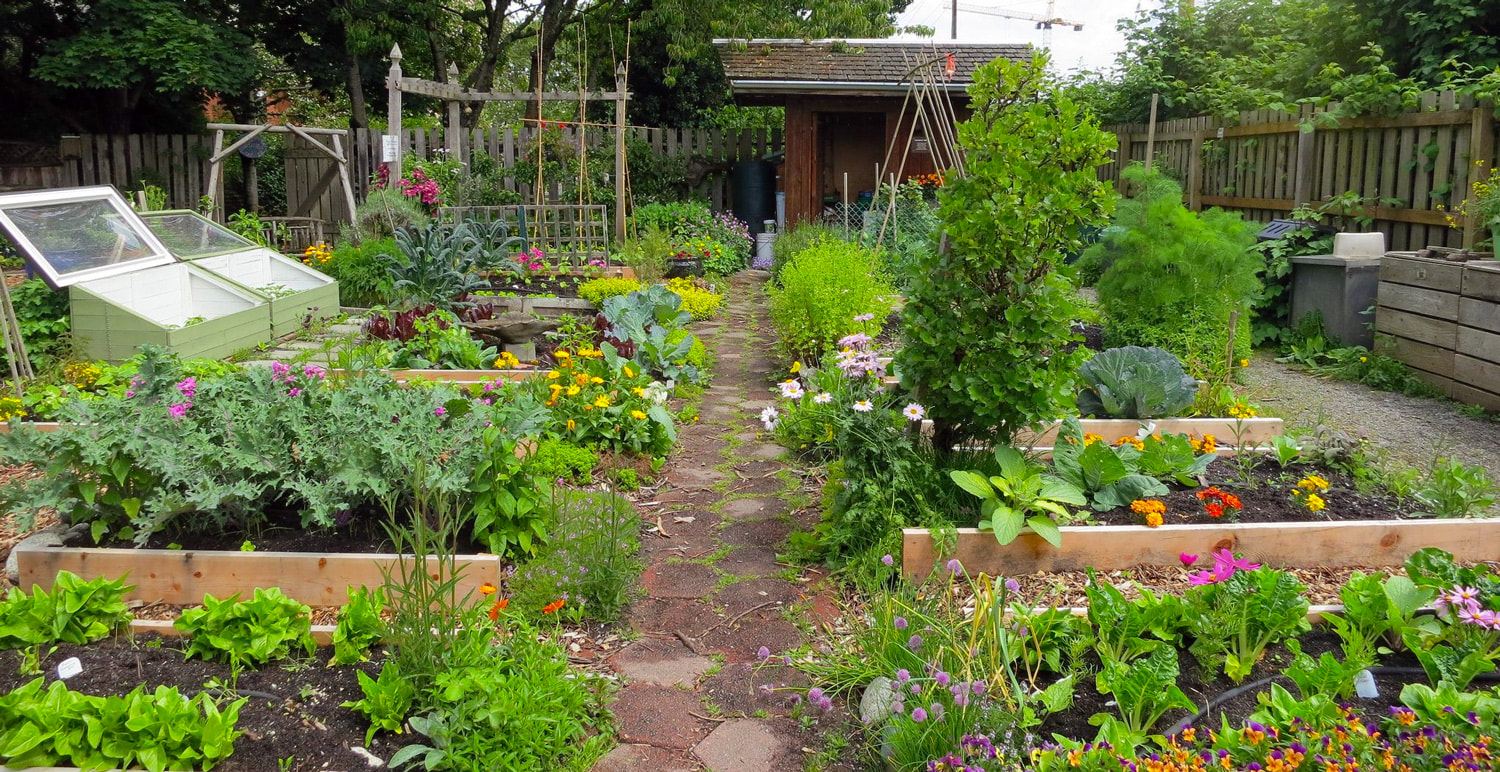


 RSS Feed
RSS Feed
